A couple weeks ago, I had the rather phenomenal experience of attending FaerieCon in Baltimore, MD. It was my first (but definitely NOT my last) FaerieCon. I was to attend the year prior, but I had the ick-plague-so-not-going-anywhere-but-to-sleep, and I missed the 2009 event. This year . . . honestly? It was my favourite event of the year--in part because it was fun but more so because it's left me thinking about a lot of things.
One of the interesting parts for me was being surrounded by creative folks who strive to capture experience in forms other than words. I treasure time with authors and with readers, but there was something mind-stretching in being with creative folks who are working with totally different toolkits but reaching for a lot of the same goals as writers.
Personally, I think about the capturing of the moment rather a lot. It's obsessed me for a good bit of my life. How do we take an instant, a bit of life and translate that to something that can then be unfolded/consumed/lived by another person? Is it possible? Can we even re-create it for ourselves? Can an emotion or an experience actually be contained, expressed in such a way that it simulates the real?
When I write, I want to make the reader IN that space where my characters are breathing. I want the reader to feel the terror or the ecstasy. It's the goal above all else for me: I want to transfer that moment. It's impossible to ever know if that succeeds though. I cannot be in anyone's mind and skin but my own, so there is never any real way to know if what I attempt to express is understood as I meant it to be. When I define a character as "beautiful," we don't call up the same visual. Even if I say "dark hair," we don't see precisely the same thing. Add in more abstract things--love, bliss, pain. . . it gets even more improbable that the experience is transferable. As a reader, it's no better. When the text tells me she was grieving, how do I KNOW that what I feel & define as grief is the same? Love? Hate? Longing?
So, at FaerieCon, I had the ability to be lost in the emotions of songs--without words in the case of cellist Adam Hurst and in words I didn't understand in the case of the German band, Faun. As I listened, obviously, I felt. But was what I felt what was intended? ("Does it even matter" is an entirely different, albeit equally valuable question, but I'm not going to attempt to tackle both topics. tonight.) Is the ache I felt listening to Adam's art the same ache he felt while he wrote it? while he played it? With some music, I know my body wants to move. I listened to a fabulous song called "Dark Carnivale" by The Gypsy Nomads, and the tension in it made me feel like standing still was a Bad Idea. Afterwards, I bought it, and the lyrics support that emotion. . . but there's a joyousness, a defiance and a fearlessness that the song has when both lyrics and music are combined. It's richer for hearing those words. On the other hand, listening to it here in my office doesn't have the urgency that it had when the floor under my feet was literally vibrating from the dancers around me. The experience of hearing it live and with others was different even than the experience of hearing it alone. It was different with knowing and not-knowing the words. One song offered three unique reactions with different variables. Are any of them actually close to what the creators experience? Does the experience for the creators vary between original creation and playing it later?
I asked Adam (after he played) what he saw when he played because--as I say, this is one of Those Topics for me. When he plays, he stares into some place that is very obviously not the room in front of him. I recognize that look. It's what I tend towards when a story is so vivid in my mind that my eyes are no longer looking out at the world; they've focused on that room inside of me where my characters' live their lives. . . at least, that's how I understand that look but my experience of creating something is different. My experience never includes reproducing that original creation in front of others. I don't compose and then re-write in front of others; musicians compose and they recreate that by reproducing the song live. There is no real equivalent for writers.
Another of the artists there, Kelly Miller-Lopez of Woodland, seems likely to float off when she sings. She sits at her harp, seeming far more like Tennyson's Lady of Shalott. I'd be unsurprising to see her pull out a scrying mirror, spindle, or any number of other wonders. She appears to reach a near meditative state, but is it the same state I find when I am lost in my story? If so, how does the slipping in and out of that state work when there are people all staring at her? Is it the same place she reaches to create?
A lot of being there led me to ponder the creative process. It also made me pause and think about how many ways we all try to capture experiences and emotions. Walking around FaerieCon, I discovered art (Feywood) made of . . . or maybe simply revealed from nature. I purchased a journal--handmade paper, handbound, leather-covered. I sniffed, petted, and felt a couple dozen journals to find the one that was right for me. I had a surreal discussion about the reasons for getting dreds (&/or tattooes), watched women translate music into dance, listened to emotion become music, and in general reveled in the fact that so so many art forms are all trying to capture an experience. They all communicate in some way, but no one art of them--including words--captures the whole of the concept, the experience, or the emotion.
. . . a fact that was all the more apparent afterwards when I tried to tell friends why the event was so fascinating. I showed them pictures; I played CDs. . . and returned to my original stance that the medium--no matter how fabulous--cannot capture the experience. Picture, music, dance, story, et al: it's all unable to fully convey the real.
Of course, I suspect that the pursuit of that goal, the desire to capture the real, is a driving force in a lot of creative things that we enjoy--just as I suspect that the real is enriched by the awareness that the real is even better than the shadow we can capture in all of our various mediums. I can read about love; I can watch a dance that reveals joy; I can feel longing as I am transfixed by music that seems to seep into my bones even as the words are in a language I do not speak. . . and through it all, I know with complete certainty that the real thing is so much more. The art in whatever form I find it reminds me why I enjoy the real. It sends me to far shores, and it invites me to get lost in moments . . . all the more because I know that the moments are impossible to freeze, to capture, or to transfer in their fullness.
Oh, and it's a bit early to say it, but I'm off to the mountains in the morning to enjoy some time experiencing nature, writing, and pondering. . . so Happy Solstice (and whichever other of the Winter Holidays you might celebrate).
skip to main |
skip to sidebar

Speculative Fiction (Fantasy/Thriller/Sci-Fi/Urban Fantasy) for adults and teens.
A group of best-selling authors provide news, reviews and interviews from the darker, more speculative side of fiction.
Who We Are

Follow Us On Twitter!
Blog Archive
-
▼
2010
(155)
-
▼
December
(20)
- SF&F movies: best and worst of 2010
- The Pleasure of Chocolate
- Hearing voices
- Christmas Traditions
- Merry Christmas!
- THE WHISPERING EYE...
- An early Christmas present
- Death's Sweet Embrace - Trailer
- My Top Ten Christmas Movies
- Supernatural Stocking Stuffers From The Underground
- Discovering Characters or Cutting Out Pictures 101
- Holiday Treats for Readers (and a Contest)
- Ascension... The Cover
- OMG is Christmas here?
- give cheer not cooties
- Holiday Traditions
- capturing experience
- It's my Birthday - but Christmas is just around th...
- The publishing rollercoaster
- True Romance: Who Rescues Whom?
-
▼
December
(20)

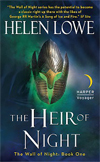
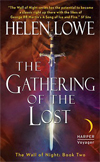
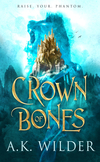
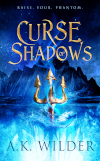
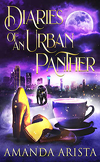
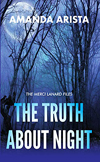

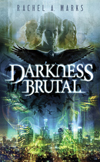
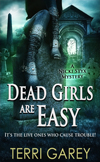
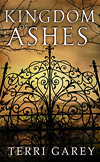
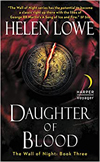
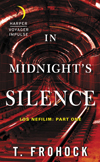

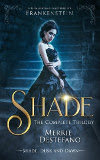
2 comments:
well put. You summed up why art is...art . I think the cool thing about art is no one feels it the same way. Each person can own it.
Just picking up on Sharon's comment as well as the post--I think a really big thing for me as an author is knowing that once the work is out there people will put their own spin on my vision--read the story through their own lens. But one of the things I love most about books "is" that they are interactive, the reader is part of the process.
Post a Comment